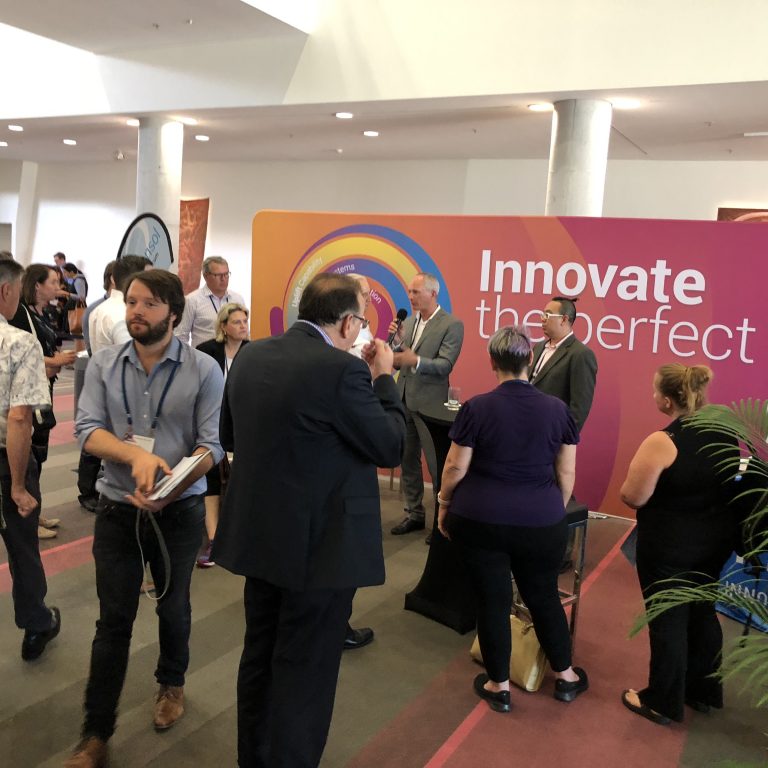Earlier this month I attended the Brisbane Discuss: The Gartner CIO Agenda 2017 event, joining in discussions led by panellists Gartner’s Jenny Beresford and Salesforce’s Robert Wickham. I found the key insights from the presentations and discussions validated many of the current trends, fears, challenges and opportunities that we ourselves are seeing in the marketplace and are helping our clients to overcome. The whole discussion was born out of Gartner’s recent 2017 CIO insights report Seize the Digital Ecosystem Opportunity. Here is a snapshot of some of the more notable insights that I took away from the day – the full report is linked at the bottom of this article.
Gartner’s Jenny Beresford’s Key Insights relating to Top Performing CIOs
- CIO’s embrace dispersed IT spending: CIO’s previously fearful or unhappy about “informal” spending on IT from Business Units (purchasing their own solutions) are now embracing this behaviour
- Take a multi-layered approach to the digital ecosystem: Beresford suggests a three-tiered approach to embracing the digital ecosystem[i]
- Extending the Technology Core: Better, faster and more agile technology[ii]
- Organisational: Culture change
- Leadership: Endorsement, authority, alignment
- Four things that really matter to CIOs: Top performing CIOs who embrace the need to extend their Technology Core say these are the top 4 most important topics:
- Business Intelligence/Analytics
- Cloud solutions
- Digitisation and Marketing
- Mobility
- CIOs taking control: Top performing CIO’s also believe that the digital ecosystem drives more in-house development due to having more control over the versatility and speed of delivery
- Agility + speed matters; Fast technology + methodology is key here – Delivery speed and Methodology are critical to successful in-house development projects
- Start-ups and Inventors: Increasing the exploration of using and engaging with start-ups and inventors
- Bimodal IT: Top performing CIOs embrace a Bimodal approach to IT which has two benefits
- Building better relationships with business as they are seen as responsive, adding value and working more efficiently
- Perceived as more innovative
It is interesting to note that one of the key barriers to achieving a Bimodal approach to IT are the lack of skills and resources, with data analytics and better analysis skills highlighted as being the most desired of the skills required and innovation the least (perhaps the market is still not sure what it means to have innovation as a skill set..)[iii]
- Leadership: CIOs in the top performers focus on being business leaders, they support the CEO and CFO in leading the business. Not just the guy who “keeps the lights on”.
- Customer experience
- Digital business initiatives
- Deliver innovations
- Optimise processes
Customer advocacy – the focus from Robert Wickham:
Salesforce’s Robert Wickham focused more on things through the lense of the customer. (understandably of course given where he works). In particular, Robert suggests that the three (3) secret-sauce ingredients to successful leadership in the current climate are:
- Obsession with Customer Experience
- Speed (to market)
- Embracing Technology
As Robert puts it, Customer Advocacy is the new KPI. It’s no longer just about customer satisfaction but will they be your advocate; will they recommend you?
We’ve always closely monitor the trajectory of technology, innovation and business trends to ensure that our products and services align to the market’s current and future requirements. Gartner’s survey findings show that “business leaders are driving enterprises to create, adopt and expand digital ecosystems. CIOs in Australia and New Zealand (ANZ) are intensifying their efforts to strengthen digital leadership, organization and technology capability”.
These findings and the key insights from the Brisbane Discuss event align strongly with our capabilities, in particular:
- Technology Core extension: in-house developed and fast delivery using Appian’s best of breed low-code application development.
- Leadership and organizational change: The Modern Business Transformation framework enables organisational change and achieving true leadership.
- Speed and agility: Through a combination of the Appian platform and the Modern Business Transformation framework, organisations can achieve speed in development and delivery.
You can download a copy of “Seize the Digital Ecosystem Opportunity: Insights From the 2017 Gartner CIO Agenda Report” here.
[i] Procensol’s Modern Business Transformation framework aligns with these three tiers providing a systematic, repeatable and holistic approach, enabling business to tackle the challenges of innovatively transforming themselves – continuously, consistently and predictably
[ii] Using the Gartner endorsed Appian Platform, Procensol can rapidly build, deploy, use, and scale problem-solving apps
[iii] This topic was recently discussed in more detail during In Conversations with QUT Executive Director, Professor Michael Rosemann, you can watch the video interview here
About the Author
Mervin Chiang
CTIO, Procensol
As Procensol’s Chief Technology and Innovation Officer Mervin brings more than a decade of experience in strategic thinking, software, systems and process-centric design for business transformation. Mervin is responsible for Procensol’s global consulting services and product portfolio. He is also responsible for global marketing and driving growth within the Asia Pacific region. Originally from Singapore and now based in Brisbane Australia, Mervin has held positions ranging from strategic BPM consulting, channel management to vendor product sales.
Related Posts

Innovation-as-Usual
“Nobody gets excited if you elaborate on what’s broken…” Professor Michael Rosemann joins us on the Procensol and MBT booth at BiiG 2017 to discuss…
Read More
Change: Overdone short-term & underdone long-term?
The title is an adapted version of Bill Gates’ now famous quote “We always overestimate the change that will occur in the next two years…
Read More

